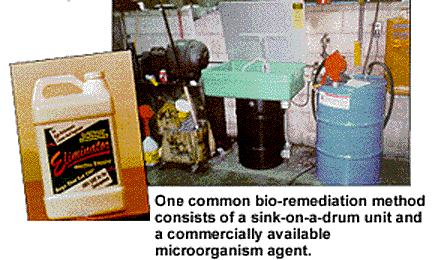The practice of using microbes to break down and clean up hazardous and unwanted chemicals has been used for many years. However, most people were first introduced to the practice of using oil digesting microorganisms in 1989, when television news broadcasts showed microbes being used in the cleanup of the Exxon Valdez spill, which deposited millions of gallons of oil along the shores of Prince William Sound, AK.
 Nearly a decade after that environmental tragedy, specially developed microbes are being used today in automotive machine shops for parts cleaning and reducing waste disposal costs.
Nearly a decade after that environmental tragedy, specially developed microbes are being used today in automotive machine shops for parts cleaning and reducing waste disposal costs.
As this technology becomes more prevalent in the rebuilding industry, some shop owners may have questions regarding using microbes in their parts cleaning duties. According to the U.S. Environmental Protection Agency (EPA), bio-remediation is a treatment process that uses naturally occurring microorganisms or microbes to break down or degrade hazardous substances into less toxic or nontoxic substances.
Certain microorganisms can digest organic substances such as fuels, oils, grease or solvents that are hazardous to humans, animals and plants. Normally, these microbes break down the contaminants into harmless products, mainly carbon dioxide and water.
According to Greg Myers, sales manager for Steelabrator Cleaning Systems, San Antonio, TX, one reason for the interest in bio-remediation is driven by the continuing changes and stricter regulations governing solvents and aqueous cleaning practices. "Bio-remediation contributes to the industry













